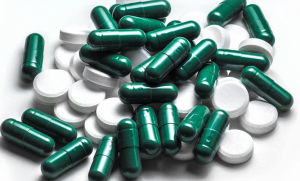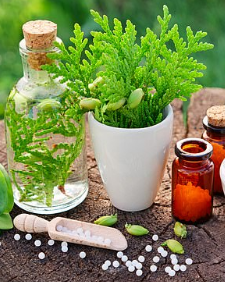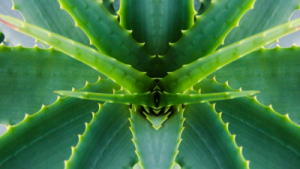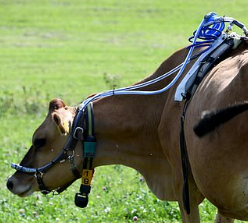Mastitis remains to be one of the major setbacks dairy farmers have to deal with every other day. It’s so cunning that it will strike just when you thought you are about to hit your targets. This is not only frustrating but has seen many farmers give up on dairy farming.
Scientists have gone out of the way to get treatment for mastitis that will help you maintain a healthy herd. Let’s walk through some of the proven cow mastitis treatment techniques.
Mastitis Treatment Using Antibiotics
The use of antibiotics as a treatment for mastitis has been a subject of debate for years. Antibiotics are commonly used to treat clinical antibiotics. This is the type of mastitis that is notorious for resurgence. This not only demoralizes the farmer but also results in huge losses.
Over the years, pressure has been mounting on the dairy industry to reduce antimicrobial use. This is a step in the right direction but the truth of the matter is that antibiotics remain to be the most reliable treatment for clinical mastitis at the moment.
Mastitis will manifest in different cows differently. This being the case, bacteriological diagnosis is advised for every cow. This helps in advising the right treatment decision. In addition to this, there are treatment guidelines that guide veterinary procedures ensuring that the right procedure is followed. Here are some of the measures that have been found to be reliable.
Types Of Antibiotics Used For Mastitis Treatment

Treatment for mastitis using antibiotics has been embraced across the United States. The intramammary antibiotics in use are labeled for treatment of staphylococci and streptococci mastitis. There is however no antibiotics approved to be used for treatment of Klebsiliella (pathogen causing clinical mastitis.
The U.S Food and Drug Administration (FDA) -have approved two antimicrobial classes for commercial use. These are lincosamide (pirlimycin) and β-lactams (ceftiofur, cloxicillin, penicillin, amoxicillin, cephapirin and hetacillin).
It’s important to note that no intramammary antibiotics have received approval since 2006. Moreover, there are no antimicrobials labeled for systematic cow mastitis treatment today in the United States. Extralabel antibiotics can only be used under veterinary supervision. Some of those in use are systematic antibiotics used to treat severe mastitis in cows. These are cows considered to have septicemia (bacteria in blood).
Systematic use of antibiotics such as ceftiofur(Naxcel®,Excenel®) penicillin or ampicillin(Poluflex®)should be limited not to reach therapeutic concentrations in cows’ udder. This is because most are administered based on observation and the margin of error is huge.
Understanding Labeled Antibiotics
Dairy farm can be a little complicated, especially when it has anything to do with drugs. Not every drug will be permitted in these farms. Over the counter drugs can only be used exactly as the labels and doses specify. Deviation from the labels will not treat effectively. Moreover, these drugs cannot be purchased without a veterinary’s prescription.
 In cases where labeled drugs are used contrary to the label, a veterinary extra label will be needed. Veterinaries are quite vital in the mastitis treatment process. In the use of flunixin to control acute bovine mastitis, 1-2ml/100lb via IV administration the indicated milk and meat withholding is enough. This is subject to change if the label is not adhered to.
In cases where labeled drugs are used contrary to the label, a veterinary extra label will be needed. Veterinaries are quite vital in the mastitis treatment process. In the use of flunixin to control acute bovine mastitis, 1-2ml/100lb via IV administration the indicated milk and meat withholding is enough. This is subject to change if the label is not adhered to.
Though the use of extra label is acceptable, it’s not legal. It can only be legalized by the involvement of a veterinary officer who meets set criteria. The Food Animal Residue Avoidance Database (FARAD) is a good resource on matters labels and extra labels.
The subject of extra labels gets murky when it comes to adult dairy cows. While extra labels may be used on some drugs, they cannot be used on sulfonamides used on adult dairy cows. Actually, the sulfadimethoxine (sulfonamide for adult dairy cows) has a label stating that it can only be used for treatment of calf diphtheria, necrotic pod dermatitis (foot rot) and bovine respiratory disease. It is thus prohibited to use it for mastitis in cows treatment.
Responsible Mastitis Treatment Antibiotics Guidelines
Train farmers how to detect mastitis in dairy cows. This is done through collection of milk samples. The samples are used to give the basic diagnosis (gram negative, gram positive or no growth). This helps settle on the right antibiotics or therapy. Culturing can be done in farms with animals found to have mild of moderate infections being isolated and milk discarded for 24 hours.
Treatment should be administered after reviewing the animal’s history. This aids in determining the chances of therapeutic success. Cows in the third or higher lactation have a higher chance of having clinical mastitis history. Treatment of such animals ought to be based on culture results. In some cases, culling, drying off, isolation or extended therapy may serve as treatment for mastitis.
Extended duration therapy as a treatment for mastitis should be reversed in cases that will improve performance. This treatment is effective of first infections and may not treat repeat cases of clinical mastitis.
Antibiotics treatment for mastitis should only be used on animals with pathogens likely to resists other treatment techniques.
Antibiotics treatment for mild E. coli mastitis is only advised if chronic strains have been found. Otherwise, therapy should take preference.
Monitor treatment results. This includes the rate of recurrence and SCC reduction.
Treatment Of Mastitis Without Antibiotics
Curative Measures
There are different curative measures used by veterinary to treat mastitis. We will however focus on the measures used to treat clinical and chronic mastitis. These curative methods are alternatives to antibiotics. They include clay therapy, homeopathy, phytotherapy and oxygen therapy among others.
Homeopathy
Homeopathy, an alternative medicine system, dates back in 1796. It was created by Samuel Hahnemann based on the ‘like cures like’ doctrine with the claim that a substance causing disease symptoms in sick people could cure sick people with similar symptoms. The same concept applies in animals.

Prevention Of Mastitis In Dairy Cows
Homeopathic Treatment
Prevention homeopathic treatment does not focus on a single animal. It is meant for the entire herd. Normally, nosodes (fragments of pathogenic cells) are administered to boost immunity.
The veterinary conducts research on the bacteria causing mastitis in the dairy cows and established the right nosode for the specific herd. The nosode is then administered to the herd according to scientific recommendations. In most cases 30 dilutions will be recommended but it is important that you follow veterinary advice.
Complexes
When mastitis strikes, you need to go beyond the nosodes. Here, a number of homeopathic remedies will be combined to combat the mastitis bacteria. Some of the combinations that have proved to be effective for mammary gland afflictions include: Bryonia and Urtica Urens, Belladonna; Sulphur, Phytolacca, Carbo Vegetabilis and Silicea.
The complexes are easy to use and will heal up to three out of four mastitis cases. They are however not recommended for animals kept for many years as the complexes tend to confuse their immune system exposing them to more attacks.
Administration
Homeopathic treatment for mastitis is administered through the cow’s mucous membrane. It’s important to note that it will be less effective if the infection was as a result of injury to the udder or teat.
Specific Treatment
Specific homeopathic treatment is recommended for symptoms such as edema type, lumpy milk among others. Specific treatment was popular with MacLeod and France’s Quiquandon.
Remedies By Macleod
| Homeopathic Remedy | Symptoms | Dose |
| Aconitum 6x | Acute mastitis infections. Cases that develop rapidly with exposure to cold dry wind. Relieves anxiety and tension. | 6 (1 in every 30 minutes) |
| Arnica Montana 30c | Mastitis resulting from teat and udder injuries. Presence of blood in secretions. | 9 (3 every day)
|
| Apis Mellifica 6 c | Edema around the udder. Swollen mammary vein. First calving. | 4 (1 in every 3 hours) |
| Belladonna | Acute postpartum mastitis. Red and hot udder. Severe pain. Hot animal body. Quick and strong pulse. | 4 ( 1 in every hour) |
| Bryonia Alba 30 c | Swollen hard udder. Mild pain when pressed. Increased lying duration. Chronic cases with fibroids. | 4 (1 in every 4 hours)-Acute
8 (2 times a week for 1 month)-Chronic |
| Belia Perennis 6 c | Deep udder injuries. Blood in secretion. | 12 (3 doses per day for 4 days) |
| Hepar Sulhuris 6 x | Sumer mastitis. Aids in udder cleaning. | 4 (1 in every 3 hours) |
| Ipeca 30 c | Internal bleeding. Pink or bloody milk. | 9 (3 per day for 3 days) |
| Phytolacca 30 c | Chronic and clinical mastitis. Sour coagulated milk. Clots at mid lactation. | 9 ( 3 per day for 3 days) |
| Silicea 200 c | Summer mastitis. Purulent abscess | 8 (2 a week for 4 weeks) |
| S.S.C 30 c | Clinical and subclinical mastitis. Big lumps and yellowish milk. | 9 (3 per day for 3 days) |
| Urtica Ulens 6x | Edema forms plaques in clinical cases. | 4 ( 1 every hour) |
Homeopathic cow mastitis treatment by Quiquandon
| Remedies | Symptoms |
| Belladonna | Hot and red mammary gland. Painful to touch. Prostrate animal. High fever. |
| Bryonia | Acute mastitis. Hot pale and hard gland. Immobility. Relief under high pressure. |
| Plambum Iodanum 5 CH +Conium Maculatum | Chronic mastitis. Marker glandular indurations. Mild pain to the touch. Hypertrophy and atrophy. |
| Phytolacca and Conium | Hard nodes or quarters. Retro mammary ganglia. Painful when touched. Cracking teats. |
| Belladonna 5CH + Lachesis 5 CH | Tissue infiltration. Violet mammary gland. Prostrate animal. |
| Carbolicum acidum 5 CH +Lachesis 5 CH | Gangrenous mastitis |
| Silicea | Pus secretion |
| Vipera Reddi | Acute inflammation. Edema presence. Gangrenous tendency. Cold quarter. Swollen veins. Severe pain when touched. Quick pulse and weak heart. |
Clay Therapy
 Clay is known to have therapeutic properties. Due to its high absorbency, it has become popular in dressing cows infected with mastitis. For effective mastitis in cows’ treatment, the clay is mixed with olive oil or water. Olive oil proves to be the best option as it gives the mixture an elastic consistency.
Clay is known to have therapeutic properties. Due to its high absorbency, it has become popular in dressing cows infected with mastitis. For effective mastitis in cows’ treatment, the clay is mixed with olive oil or water. Olive oil proves to be the best option as it gives the mixture an elastic consistency.
When using olive oil, make a point of mixing the oil thoroughly. On the other hand, water needs no mixing. Leave it to sip slowly into the soil. Cover with a cloth and set in the sun. In either process, use a wooden spoon and a non-reactive container.
To increase the therapeutic effect, add 2-3 drops of thyme or pine oil in every two litres of the mixture. The mixture can then be applied gently on the teats and udder.
Preferably, spread the clay mixture on the parts affected by mastitis after milking. During the day, the clay tends to dry and should be replaced 2-3 times. No replacement is needed throughout the night.
Healing Signs
The treatment for mastitis will be said to have worked when the teats stay oily after the dry oil-clay mixture has been removed. In acute mastitis, the results will be seen after 4-6 hours. In chronic mastitis, treatment will take two to three days. If healing signs aren’t seen, seek alternative mastitis treatment.
Phytotherapy
This is the use of plant-derived remedies in the prevention and treatment of diseases. It is a science based medical practice that has proved to be reliable in the treatment of mastitis.
Juliette De Bairacli-Levy Method
This is a method that treats mastitis in one or two weeks. It is effective in small herds and may not be practical in huge dairy farms. This method has proven to be very reliable in the treatment of clinical mastitis.
In this method, herbs such as wood sage, garlic and teucrium scorodonia are used. The wood sage is very effective on mammary gland treatment.
How The Method Works
- Confine affected animals in airy quarters
- Fast the animal for two days. Only provide drinking water.
- Ensure that the animal doesn’t feed on bedding sacks. Avoid lying down on cold cement.
- Administer a single dose of wood sage tea every fasting morning. The tea is prepared by mixing two handfuls of the finely cut herbs, two teaspoons honey and one and a half litre of water.
- Administer 1 dose of senna-based laxative every fasting night. Prepare this by soaking 20 senna cloves in cold water (half litre) for 6 hours. Add ground ginger (1 teaspoon).
- After fasting, administer a mixture of warm water (1/2 ltr), milk (2ltr) and molasses (10 tablespoons). Provide wood sage (finely cut) mixed with molasses and bran.
- At mid-day and evening of the third day, administer a mixture of garlic cloves (6-8) grated in water (1ltr).
- In the following days, provide softened sweet hay (2/3 gallons) mixed with bran (1kg) and molasses (10tablespoons).
- Provide two handfuls of Greanium robertianum, raspberry leaves or Artemisia atrotanum.
- If the treatment is successful, the cow’s temperature will return to normal and it can be left to graze normally.
Aloe
Aloe is popular for its medicinal value. When it comes to mastitis treatment in dairy cows, aloe is used in udder treatment. It’s mainly used when the udder has injuries leading to staphylococcal mastitis. The aloe is applied in its raw form and it works magic.
For effective treatment for mastitis, you will also need to inject the affected quarter with aloe syrup. It is recommended that you use 20-60 cc of aloe in its juice form at least once every day. It’s important to note that the teat needs to be sterilized before injecting the aloe. The aloe in its natural form brings all the filth that may aggravate the situation in absence of sterilization.
Aloe works by draining the infection. It also has anti inflammatory properties and will also work as a coagulant. In cases of hardened teats and udders, the diuretic property will come in handy in the softening process.
Remember to isolate the milk collected from dairy cows under treatment. Its only safe after the treatment is over.
Kelp
Kelp is one of the few plants whose success in treatment for mastitis has scientific backing. Its rather preventive than curative making it even better. It not only contains a high amount of minerals but also has an effect on a wide range of bacteria.
Mastitis Ointment Biodynamic
The kelp ointment is made from marigold flowers and lard. Here is the step by step guide on how to prepare the kelp ointment.
- In your double boiler, melt 2 kilograms of lard
- Add dried marigold flowers (Calendula officinalis) – Two handfuls
- Heat the mixture for thirty (30) minutes
- Filter using cheesecloth. Checkout some of the best cheesecloth here
- Pour in containers (1 ltr) and let cool
NB: For high quality ointment, here’s how to extract your marigold. Fill a jar with 50-100 ml of dried marigold flowers, cover it with ethylacetate. The ethylacetate is in solid forms in drug stores. Seal the container. The ethylacetate evaporates quickly leaving high quality marigold extract.
Dressings
Dressings were popular in the 19th century for the treatment of clinical mastitis. Some of the practices included;
- Application of warm compresses. This was meant to reduce inflammation. The compresses were followed by tea leaves, hop meal or bran and would be repeated often. The best way to do this is having a T-shaped net (cheesecloth) which goes between the hind limbs and is tied to hold the cataplasm on the udder.
- Ointment or extract from Belladonna. The extract was rubbed on the udder, affected quarter, to reduce pain. It also aided in the secretion of the mammitic milk.
- Oil and molasses. These were used to treat constipation and fever associated with clinical mastitis.
Oxygen Therapy
You may have heard about oxygen therapy as a cure for diseases in plants. Well, its also used in animals. In dairy cows, its mainly used in treatment of mastitis. Known as ‘the cure for all diseases’, oxygen therapy is very essential in treatment for mastitis.
Oxygen therapy involves the use of hydrogen peroxide. The Koch treatment, invented by Dr. William Fredrick Koch, uses glyoxilide as its treatment base. This has similar properties as peroxide and proves to be effective.
Glyoxilide is found in solid form and is provided in 5 cc ampoules doses. This dose is injected into the dairy cow’s shoulder or neck muscles using a hypodermic needle. A single dose/treatment is enough to treat mastitis.
After injection, Glyoxilide provokes reactions in cows that will be seen in 21 day cycles and fade with time. The treatment will be effective for 1-2 years.
Other Effective Cow Mastitis Treatment Techniques
Acupuncture
Acupuncture involves the insertion of very thin needles through the skin to strategic points. In treatment for mastitis, it’s used to reduce pain. It has been found to be very effective but takes very long making it less popular. There are also few experts in this therapy and getting one may be challenging.
Natural Method
This is a rapid treatment that involves leaving the calf to suckle an infected cow vigorously. The calf is directed to focus on the infected quarters. Though effective, the calves may act as a vector of the mastitis bacteria in the herd or even infecting the other healthy quarters.
Antibodies
There are products made with antibodies. These include colostrums and are readily available from homeopathic veterinarians. Intra muscular injections are used to administer the antibodies. The mastitis bacteria will be flushed out in less than 12 hours. This avoids milk loss in affected dairy cows.
Conclusion
 Mastitis manifests in different forms in different cows. Cows will also react differently to mastitis in cows treatment. This being the case, there is no treatment that can be said to be one size fits all when it comes to treatment for mastitis.
Mastitis manifests in different forms in different cows. Cows will also react differently to mastitis in cows treatment. This being the case, there is no treatment that can be said to be one size fits all when it comes to treatment for mastitis.
It calls for you as the farmer to identify the specific mastitis bacteria, the type of mastitis and the extent of infection to determine the treatment that will be effective.
We hope that the different techniques for treatment of mastitis discussed here will shed some light in the quest for a long lasting solution. Remember to consult your vet to get guidance on whether to use mastitis treatment antibiotics or treat mastitis without antibiotics.
Veterinary advice is very important in making crucial decisions in dairy farming. You can visit this post to learn more about signs, detection, diagnosis, treatment and prevention of mastitis in dairy cows. This might just be the beginning to the end of the fight/struggle with mastitis in your farm.
